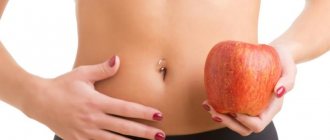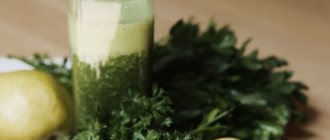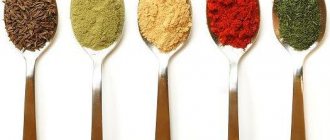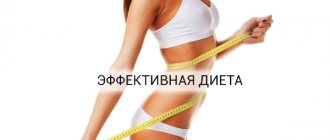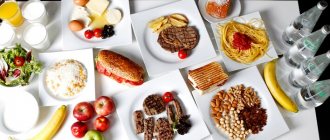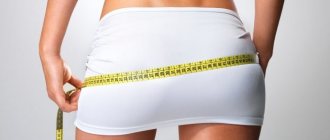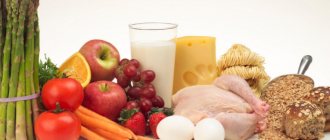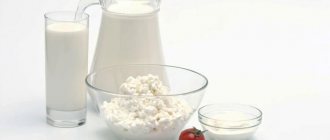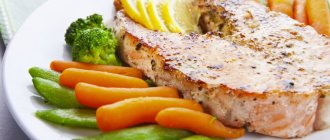The BUTCH diet is a nutritional system based on the principle of alternating carbohydrate and protein days. It was developed by nutritionist Jason Hunter (America), who works with athletes. This easy-to-use and highly effective program is loved not only by athletes, but has also become popular among those who want to say goodbye to extra pounds.
The BUTCH diet can bring balance to two opposing camps: carbohydrate lovers and meat eaters. By following it, there is no need to decide what is more important - glucose or protein, but you can eat the two most important components of nutrition. In this case, there are no “disruptions”, and the weight loss process is effective.
What are the advantages of BEACH over other diets?
1. This is a specific system that involves nutrition as close to balanced as possible, which minimizes harm to health.
2. If the classical cyclicity is observed, the body does not experience a significant deficiency of both proteins and carbohydrates.
3. While following this diet, you will not suffer at all from the annoying feeling of hunger; in the worst case, your appetite will be comparatively less than with other diets.
4. The BUTCH diet is quite simple; you won’t need to invent intricate recipes or buy overseas fruits and vegetables.
5. Metabolism will be able to remain at a high level (with regular physical training at least several times every week), it will not slow down, as happens with any other diet. Also, protein-carbohydrate alternation helps to cope with the well-known “plateau effect” (this is when weight stubbornly does not decrease for a long time because the body has already adapted to the imposed restrictions).
6. For people who play sports, it is this system that allows them to “find” strength for training.
7. This diet is not difficult to adhere to for 4-9 weeks without significant damage to health, which is suitable for people for whom express diets are contraindicated.
8. It is this nutritional system that involves the loss of excess fat deposits, not water. Moreover, subcutaneous fat begins to burn already in the first days of BUTCH.
9. This nutrition system helps cleanse the body. Proteins and carbohydrates are supplied in turn and are absorbed as much as possible. Accordingly, the skin becomes smoother, inflammation disappears, complexion is evened out, and the intestines are cleansed.
10. For those who just can’t start eating rationally and in moderate portions, this diet will help you switch to proper nutrition without much psychological effort. After a few weeks of BUTCH, you adapt to the restrictions.
11. A more cheerful mood compared to other diets due to the periodic addition of carbohydrates into the diet and the inclusion of “break days” in the menu (when you can enjoy proteins and carbohydrates).
12. If the BUCH and exit from this diet are organized correctly, then the lost kilograms will not return after the end of the diet.
Disadvantages of Carbohydrate Rotation
Considering the paucity of information on this topic, there is practically no data on the shortcomings of protein-carbohydrate alternation in the Russian-language network. Let's list the main ones:
- The rate of weight loss is significantly lower compared to the classic weight loss diet. This is because the body switches to a highly efficient metabolic mode during low-carb days, so during high-carb days, most of the nutrients are transferred back to fat. Thus, we get something like a “pendulum effect”: fat burning - fat synthesis. Illiterate authors try to deny this, but this position is clearly confirmed in studies measuring the rate of lipid metabolism.
- High risk of developing gastritis, peptic ulcers and gastrointestinal disorders.
- The diet is much more difficult to individually adjust, due to the complex regime. Negative reviews are especially often reported by women who cannot adequately calculate calorie content. According to statistics, about 30% do not achieve the desired result.
- Despite its high popularity and approval from experts, superiority in effectiveness has not been confirmed in studies.
- Nutritionist Anna Belousova believes that this diet cannot work for a long time (more than 30 days), therefore it is of little use for severe obesity, but at the same time predicts high effectiveness when combined with physical activity, although it does not provide sufficient justification.
Cons of BUTCH
1. The most common schemes of protein-carbohydrate alternation suggest, although stable, but slow weight loss. If you need to lose weight “for the holiday” in a week, then only BUCH according to Malysheva’s scheme will do.
2. Like any other special food, it has contraindications. Protein-carbohydrate alternation is not suitable for people with kidney, pancreas and liver problems.
3. This diet is not suitable for particularly obese people. First, you will have to lose weight according to the usual scheme with limited calories, losing both muscle and fat mass, and then start alternating protein and carbohydrates. If a person weighing 100 kg consumes 400 grams of protein, this could lead to serious kidney problems. You can understand whether this diet is right for you or not by determining the amount of excess weight you have. If up to 1/4 of your weight is fat mass, then BUTCH is what you need.
4. Many people complain about lack of energy on protein days. To reduce this inconvenience, do not exceed the number of protein days (optimally 2-3).
5. It’s not easy for everyone to periodically go without fruits and vegetables, but this is a feature of the diet.
Contraindications
The BEACH diet is highly effective, but it has a number of contraindications that should not be ignored so as not to harm your own health:
- This diet is not suitable for obese people. BUCH involves active physical activity, which in people with excess body weight can provoke problems with the cardiovascular system, lungs and joints.
- People who have problems with veins. Increasing the amount of protein you consume can change your blood chemistry, which increases your risk of blood clots.
- Suffering from kidney diseases.
- During the period of vitamin deficiency.
- People with diseases of the gastrointestinal tract.
- Pregnant women and during lactation.
- With impaired metabolism.
- Patients with diabetes mellitus.
- During menstruation.
Also, this diet plan is not suitable during the period of growth and development of the body, that is, up to 23 years.
The BUTCH diet is a tactical method of combating excess weight, backed by scientific knowledge and experience. It is called a modification of the low-carbohydrate diet. The main feature is manipulating the amount of carbohydrates consumed. Thanks to this nutrition program, many people have already been able to achieve the desired result.
Like any other diet, BEACH has its pros and cons, so we recommend consulting with a nutritionist before starting it.
It is also important to remember the basic principles:
- This is the food system.
- Suitable for people actively involved in sports.
- The optimal duration is no more than 4 weeks.
- Be sure to consume maximum vitamins and minerals.
- Individual adjustment.
Athletes use the BEACH diet in the final stages, when it is necessary to maintain muscle mass, but 2-4 extra kg remain before the competitive weight.
Author: Daria Pisareva, especially for Mama66.ru
Acceptable products for BUCH
Products BUCH
Products that are allowed on protein days
1. Meat: veal, chicken, lamb, rabbit, lean pork and beef, turkey, pheasant, goose, duck.
2. Seafood: squid meat, octopus tentacles, mussels, lobster, shrimp, halibut, hake, flounder, sometimes cod, pink salmon, tuna, salmon, salmon, trout.
3. Dairy products: low-fat cheese, natural yogurt, fermented baked milk, dietary cottage cheese, kefir, milk and yogurt.
4. Eggs: you can eat as much egg white as you like, one whole egg per day.
Foods allowed on carbohydrate days
1. Cereals: rolled oats, millet, barley, buckwheat, rice, wheat and others.
2. Pasta and bread: rye bread and pasta, bread and pasta with bran, durum wheat maroons.
3. Unsweetened fruits and non-starchy vegetables, herbs.
On mixed days, foods for protein and carbohydrate days are equally combined.
From fats, a tablespoon of flaxseed or olive oil is allowed.
Where to start BUTCH
What is prohibited to eat
You should avoid all foods containing fats:
- butter and vegetable oil;
- nuts, seeds;
- fatty meat and fish;
- egg yolks;
- whole milk;
- avocado, olives.
What else you can't eat:
- fast carbohydrates - sugar, honey, bananas, grapes;
- confectionery;
- semi-finished products – cutlets, dumplings;
- chips, crackers, snacks;
- store-bought sauces, ketchup, mayonnaise;
- smoked foods and fried foods.
Where to start the BUTCH diet?
The most important weapon to help you endure dietary restrictions is motivation. Therefore, before starting a diet, try to “measure” yourself as much as possible on all fronts. Weigh yourself, take measurements of volumes (chest, sides, waist, legs, hips, arms, calves). You can take reference photos. This will help you not to lose your temper.
If you ate more or less correctly before the diet, then immediately start your protein day.
If you have never been a follower of a balanced diet, then try to limit the intake of harmful foods in your diet at least a few days before the diet.
No carb day
A day without carbohydrates is simple, but quite expensive physically and mentally. Everything is as it is called - carbohydrates are canceled. You will get some carbohydrates from green vegetables, but they will be very small.
Remember that you will achieve results if you can overcome yourself and spend carbohydrate-free days without breaking down. Some people have an easier time with no-carb days, while others have a harder time. Only through experience can you find out at what minimum amount of carbohydrates you can function normally and even exist.
Four-day cycle as the main version of the BEACH diet
The optimal duration of a protein-carbohydrate alternating nutrition system is a month. Maximum - up to three months. After this period, the body adapts and metabolism decreases significantly.
The most common (and naturally the most convenient) version of BEACH is a cyclical scheme: “two protein days (consumption of three to four grams of protein for every kilogram of weight you dream of, and the maximum absence of carbohydrates in the diet) - carbohydrate day (on the contrary, 5 -6 grams of carbohydrates per kilogram of desired weight, 1 gram of protein per kilogram of weight is allowed) - mixed day (carbohydrates and proteins equally - approximately two to three grams per kilogram). After a mixed day, a protein day begins again, and so on in a circle.
The essence of this nutrition model is to burn fat due to contrasts in the intake of proteins and carbohydrates. Typically, the body takes energy from the fats and carbohydrates it consumes, and uses proteins to build and repair various tissues (including muscle). If carbohydrates stop entering the body, and not enough fat is supplied, then glycogen reserves in the liver and muscles become an energy resource. When these resources are depleted, the body is forced to melt subcutaneous fat to obtain energy. By the end of the second protein day, glycogen reserves are depleted, and the body can turn on “energy saving” mode, slowing down the metabolism. To prevent this from happening, the menu includes a high-carbohydrate day and a mixed day. Then the body relaxes and continues to break down subcutaneous fat.
Dinner must be protein-rich on all 4 days of the cycle. That is, the proteins allowed on a carbohydrate day should be distributed among the last meals.
On protein days, you should try to cut down on fats and carbohydrates as much as possible. If you “fuel” with nuts, cheese, and seeds, weight loss will be less effective.
Fats should be eliminated as much as possible. To maintain normal functioning of the body, a tablespoon of flaxseed or olive oil per day is allowed.
For an example menu, let’s calculate the required amount of macronutrients for a desired weight of 60 kg. For a protein day you will need 180-240 grams of protein. On a carbohydrate day, you will need to eat 300-360 grams of carbohydrates and 60 grams of protein. On a mixed day, you can consume 150 grams of protein and carbohydrates.
How does weight loss happen on BUC?
What substances should you load your body with during the diet? It should be remembered that one gram of glycogen stores 4 grams of water, which evaporates when the body begins to starve. Considering that an athlete has a reserve of this substance from 400 to 600 grams, and an ordinary person has 300-400 grams, all that remains is to make the necessary calculations and get the approximate volume of water (and then fat) that will come out during normal fasting:
- An untrained person has from 1200 to 1600 grams;
- Athletes will lose from 1600 to 2400 grams.
Nutritionists advise loading the body with slow carbohydrates (they are found in some cereals: oatmeal, buckwheat, pearl barley; as well as in TSP pasta).
Why these particular products? The thing is that even when a person has a carbohydrate day, his body still continues to burn fat. In the process of consuming fast carbohydrates (they are found in sweets, flour and fruits), fat burning stops. This occurs due to an increase in insulin levels. Therefore, you should not eat fast carbohydrates.
Sample menu BUCH
Protein day:
- breakfast: low-fat cottage cheese - about 200 grams, black coffee (you can crush cloves or cinnamon).
Total: proteins – 44 grams, fats – 1 gram, carbohydrates – about 7 grams.
- second breakfast: 4-white omelette, baked without butter.
Total: 14.5 grams of protein.
- lunch: baked chicken breast (200 g) + one cucumber (can be salted) with olive oil (teaspoon).
Total: proteins – 48 grams, fats – about 4 grams, carbohydrates – about 3 grams.
— afternoon snack: baked lean fish (serving 200 grams).
Total: proteins – 40 grams, fats – 4 grams.
- dinner: cottage cheese 0% - up to 200 grams.
Total: proteins – 44 grams, fats – about 1 gram, carbohydrates – about 7 grams.
Carbohydrate day:
breakfast: 25 grams of raisins (1 tbsp) + 100 grams of oatmeal on water (dry cereal) + 9 grams of honey (one tsp).
Total: proteins - 12 grams, fats - 6 grams, carbohydrates - 91 grams.
- second breakfast: a small banana (about 150 grams).
Total: proteins - 2 grams, carbohydrates - 34.5 grams.
- lunch: potatoes (baked or boiled) with fresh (sauerkraut) cabbage salad, about 400 grams of potatoes, about 200 grams of cabbage + one spoon of flaxseed oil (5 grams).
Total: carbohydrates - 91 grams, proteins - about 13 grams, fats - 5 grams.
- snack - a large apple (about 300 grams).
Total: proteins - 1 gram, carbohydrates - approximately 34 grams.
- afternoon snack: rye pasta - about 50 grams (dry weight) + a spoonful of flaxseed oil (5 grams), one apple (average - 200 grams).
Total: proteins – 6 grams, carbohydrates – 48 grams, fats – approximately 5 grams.
- dinner: cottage cheese 0% (about 200 grams) + two teaspoons (teaspoons) of honey (about 18 grams), dried fruit uzvar (naturally without sugar).
Total: proteins - approximately 36 grams, fats - about 1 gram, carbohydrates - 20.5 grams.
Mixed day:
- example of breakfast: oatmeal (cooked in water) - 100 grams (dry cereal), milk 1.5% - about 100 ml, boiled egg.
Total: proteins - 27.5 grams, carbohydrates - 71 grams, fats - 18.5 grams.
- second breakfast: apple (small - 200 grams).
Total: protein - 1 gram, carbohydrates - approximately 22 grams.
- lunch: chicken breast (baked) – 200 grams + baked potatoes (200 grams) + salad (cabbage, tomatoes, cucumbers) – up to 200 grams + spoon (teaspoon) of flaxseed oil.
Total: proteins – 55 grams, carbohydrates – 45.5 grams, fats – about 7 grams.
- afternoon snack: 4 egg white omelette, cooked without oil.
Total: proteins – 14.5 grams.
- dinner: up to 200 grams of baked lean fish + 200 grams of sauerkraut.
Total: proteins – 42 grams, carbohydrates – 11 grams.
As with any diet, the smaller and more often you eat, the faster your excess weight will go away. If you divide your daily portion of food into 5 meals, it will be very good, and if you divide it into 6 meals, it will be even better. Under no circumstances follow the nonsense of “don’t eat after six.” You should eat two hours before bedtime, and eat protein foods. If you had dinner at 18.00, and went to bed at 24.00, and all this time you sat without a snack, then the body will sound the alarm and the next day will begin to sharply store fats and save existing ones.
Menu for carbohydrate day
| 1st meal: | 1. Green tea/coffee. 2. Boiled egg whites – up to 5 pieces. 3. Oatmeal/buckwheat (150 g dry product). |
| 2nd meal: | 1. Protein shake, or 350 ml of whey. 2. Apple – or 250 ml of juice. |
| 3rd meal: | 1. Baked low-fat meat. Fish or chicken + avocado or other green vegetable 30 g. 2. Fruits up to 250 g. |
| 4th meal: | 1. Kefir/yogurt – 1 l. 2. A small amount of fast carbohydrates (dark chocolate up to 50 g). |
| 5th meal: | 1. Salad of leafy vegetables and tomatoes. 2. Steamed meat. 3. Buckwheat porridge 100 g of dry product. |
Duration of the BUTCH diet and how to get out of it correctly
You choose the duration of the diet yourself. As mentioned above, it should not last more than two to three months. Usually results are visible at the end of the first week. Try to focus on volumes, not weight. During BEACH, your weight changes all the time: on protein days you lose up to a kilogram of water, and on carbohydrate days, on the contrary, it returns. Losing weight and volume directly depends on how much excess fat you have. If you need to dry out a little, then you can lose 5 kilograms in a month, and if you have something to get rid of, then the same weight can go away in a week.
Many people mistakenly consider the result of a diet to be the result of the end of the first cycle. It is not right. During a four-day cycle, weight and volume change like a cardiogram. On the protein days of the cycle, 0.5-1.5 kg is lost, but most of this weight is water. Then, on a carbohydrate day, water is bound by the carbohydrates entering the body (with 1 gram of carbohydrate retaining 4 grams of water), the same thing happens on a mixed day. Therefore, usually at the end of the cycle, weight increases, but it is water, not fat. After four cycles (minimum three), you can already evaluate the results of the BEAM, whether it works specifically in your case or not.
Getting out of the BUCH is quite simple. After your last mixed day, give yourself a week of “mixed days.” In its own way, this is a normal balanced diet. Then you can gradually start pampering yourself with goodies, but in moderation and not often.
Why is protein-carbohydrate rotation effective?
First of all, limiting carbohydrates on protein days leads to the rapid release of excess fluid and, in combination with training, accelerates fat burning. If the menu is low in calories and physical activity is present, a person will lose weight during protein days.
Balanced and high-carbohydrate days in the BUC diet serve as “prevention against weakness.” Having filled your glycogen depots, you will feel a surge of fresh energy, and you will not have time to face the dizziness, ketosis, bad mood and reluctance to do anything typical of a protein diet.
Training during BUCH
To lose weight faster, exercise about 3 times a week. Try to keep your workouts on a carbohydrate or mixed day. Then you will have enough energy to complete them.
The training process during BCH has its own characteristics. It should be taken into account that on protein days, practically no carbohydrates and fats enter the body.
If your workout falls on a carbohydrate or mixed day, then you can do it as usual, you will have enough strength. If you decide to work out on the first protein day, then preference should be given to aerobic training (after days of carbohydrate loading you will be full of energy and strength), if the workout falls on the second protein day, then it is better to give preference to strength training (maximum weight, minimum number of repetitions , mostly up to 5).
The training schedule for a four-day BCH will be something like this:
- first protein day - training will ensure renewal of muscle tissue and slight fat burning, exercise according to the usual scheme: 5-10 minutes of cardio, 40 strength, 30 minutes of cardio;
- second protein day - training will help get rid of excess fat and separate muscles, exercises: 5 minutes of cardio - about an hour of strength training with maximum weight, 4 sets of 5 repetitions - 20 minutes of cardio;
- high-carbohydrate day - you will have the strength to train, you can focus on those exercises that are difficult or work on the correct technique;
- mixed day - a great day for those who are working on beautiful muscle definition: we do strength training, 4 sets of 10 repetitions.
Recipes
There are many delicious dishes that are suitable for the BUTCH diet and can diversify a person’s daily diet.
Salads
Recipe No. 1. Egg salad
Products:
- One onion;
- Chicken breast (200 grams);
- Squid (200 grams);
- 4 eggs;
- Mustard in powder form (10 grams).
How to cook:
- You should soft-boil the eggs;
- Boil the chicken breast, then cut it into strips;
- Boil the squids and also cut them;
- Prepare the blender. Mix boiled eggs, onion and mustard powder in it;
- Season the resulting dish and mix all the ingredients.
Recipe No. 2. Cabbage salad with honey
Products:
- 300 grams of fresh cabbage;
- 10 grams of sugar;
- A little lemon juice (15 ml);
- Rhubarb juice (40 ml);
- Honey (add to taste).
How to cook:
- Chop cooked cabbage;
- Squeeze it until the juice appears;
- Add the rest of the ingredients to it.
Recipe No. 3. Protein-carbohydrate salad
Products:
- 150 grams of squid;
- One cucumber;
- Chicken breast (100 grams);
- 2 leaves of green salad;
- A sprig of dill.
How to cook:
- You should cook the squid and chicken breast until fully cooked;
- Finely chop these products;
- Chop the cucumber and add to the breast and squid;
- Place lettuce leaves nicely on a plate;
- Place the resulting salad and garnish it with dill.
First courses (soups)
Recipe No. 1. Spinach soup
Products:
- 400 grams of turkey;
- 100 grams of spinach;
- 2 cloves of garlic;
- 100 ml milk;
- Seasonings (add as desired).
How to cook:
- Boil the meat, then remove from the water and remove the bones. Then cut and return back to the pan with the broth;
- Chop the spinach, add it to the pan with the meat and cook for about 10 minutes;
- Grind it all until smooth in a blender, adding milk.
- Sprinkle with spices to taste.
Recipe No. 2. Lentil-chicken soup
Products:
- 250 grams of lentils;
- One onion;
- 5 liters of water;
- 400 grams of chicken fillet;
- 100 grams of celery root.
How to cook:
- Boil chicken fillet;
- Then add lentils to the broth;
- After 10 minutes of cooking, add chopped vegetables;
- And then the chicken, cut into strips.
Second courses
Recipe No. 1. Vareniki
Products:
- 500 grams of potatoes;
- 200 grams of cabbage;
- One onion;
- 250 grams of flour.
How to cook:
- First you need to knead the dough;
- Shred the cabbage;
- Put it out;
- Chop the onion and fry it;
- Boil the potatoes and mash them into a puree;
- Mix all ingredients;
- Fill the dough and boil.
Fat burners for BUCH
The best fat burner, as with any other diet, is sports. Properly organized workouts will help you burn subcutaneous fat and tone muscles.
Also, do not forget about the benefits of clean water. First, water will help flush out toxins. Secondly, in order to absorb protein, the body spends a large amount of water. During meals, drink green and herbal teas, on carbohydrate days - fruit compotes and decoctions of dried fruits without sugar. Between meals, suppress your hunger with a glass of clean water.
Season your food with all kinds of spices. They will help speed up your metabolism and mitigate dietary deprivation.
You can use artificial fat burners. For example, L-carnitine. It is advisable to use it on training days, both aerobic and strength training. Use 0.5 - 1 gram of this drug half an hour before training (it is best to drink liquid L-carnitine).
Low carb day
To achieve greater results, it is necessary to calculate the ratio of carbohydrates to fats and proteins. In the low-carbohydrate phase, the amount of protein taken should be higher. Women need to multiply their weight in kilograms by 2.4, men - by 3. This number reflects the number of grams of protein required per day; multiply that number by 4 to get the number of calories you'll get from protein. To calculate the number of grams of fat, a woman needs to multiply her weight by 1, and a man - by 1.6. Multiply the result by 9 and get the number of calories that you will take from fat. Find out the number of carbohydrates in grams by multiplying your weight in kilograms by 1.2 (women) and 1.8 (men). The resulting number, multiplied by 4, will show the number of calories that you will “get” from carbohydrates. Add all three numbers to get your total calories for that day.
Other lesser-known BCH schemes
Express version of BUCH from Elena Malysheva
This BUTCH scheme was invented just for impatient lovers of express diets. Like all express diets, it carries a potential threat to health, but at the same time it helps to lose up to 5 kg in a short time.
The essence of BUCH according to Elena Malysheva is as follows. For breakfast, you are supposed to eat a boiled egg, washed down with a glass of clean water. Then during the day you are allowed to eat exclusively chicken (a whole chicken, skinned and boned, boiled and consumed during the day). Sort of like a mono-protein day. Then a low carb day. Grate raw carrots, cabbage and beets and season with flaxseed oil and lemon juice (take 500 grams of each vegetable, a tablespoon of oil). Eat this salad in equal portions throughout the day. You are allowed to follow this diet for up to 7-10 days.
What is the essence of Malysheva’s BUCH?
During a protein day, you challenge your body to digest huge amounts of protein. At the same time, practically no fats and carbohydrates are supplied. In order to process such a large amount of protein and maintain all vital functions, the body spends energy, which it takes from fat reserves. At the same time, the blood becomes highly acidic (this happens when consuming protein).
On a carb day, you eat vegetables that have the lowest glycemic index. The body again experiences a calorie deficit, and a special salad also alkalizes the blood and removes toxins. This alternation of days solves the problem of constipation, which can occur when consuming large amounts of protein. It is imperative to drink clean water, as with all types of BUCH.
Classic cycle BUTCH Powell
The classic BUTCH Powell cycle is a variation of BUTCH that was developed by Heidi and Chris Powell, an American husband-and-wife team of trainers. First of all, this diet is ideal for athletes, but it can also be used by people leading an active lifestyle.
The BUCH Powell cycle is 7 days with the following schedule:
1st – 3rd – 5th days – protein days, with strictly 70% protein, 30% carbohydrates, calorie content – 1200.
Days 2 – 4 – 6 – carbohydrates, protein 30%, carbohydrates 70%, calories – 1500.
Day 7 – mixed day, 2000-2500 kcal. This day works as a psychological release and a “shake-up” for metabolism.
Using the Powell cycle you can lose about 5 kg per month. Maximum duration is 3 months.
BUTCH - Jason Hunter's thirty days
This version of BEACH is considered the founder of all other interpretations of the diet. It was invented by Jason Hunter (sports nutritionist). On this diet you can lose an average of 7 kg per month. The duration of Hunter's BUCH is 30 days.
The cycle consists of three days:
1st – carbohydrate, you need to eat complex carbohydrates + vegetables – fruits, this day gives a “metabolism shake-up” (3 grams of carbohydrates per 1 kg of desired weight);
2nd – low-carbohydrate, you are allowed to eat carbohydrates that have a low glycemic index and proteins (1.5 grams of carbohydrates + 2.5 grams of proteins per 1 kg of desired weight);
3rd – protein, you can only eat proteins (3-4 grams of proteins per 1 kg of desired weight).
Calorie content should be about 1200 kcal per day, serving size is no more than 250 ml at a time. It is advisable to eat frequently and drink plenty of fluids.
In general, all BCH schemes are easily transferred, and their results are stable.
Dangerous advertising variations
Unfortunately, the BEACH diet has many simplified schemes. The purpose of all these miracle techniques and simplifications is to popularize the diet. To do this, sellers of the “miracle nutrition” use the performance data from the classic rotation and do not mention possible side effects. At the same time, a huge list of products is offered as a menu; the principles of the diet are often violated.
This leads to the following consequences:
- Reducing the effectiveness of the diet. Yes, it becomes safe, but the pendulum can show on the scales is not at all a minus.
- Increasing intensity. This happens when women try to rape their bodies with milkweed and other nonsense. Then such a diet has a more stringent caloric restriction (which does not always coincide with consumption), and ensures rapid loss of water and muscles in the shortest possible time. The result on the scale is stunning (up to 7-10 kg per week), but if you stick to such an express diet for a long time, you risk going to the hospital.
Let's consider the most dangerous options for BUCH power supply.
Malysheva's diet
There is no point in going into detail about this diet.
Let's just list the reasons why its effectiveness is questionable:
- Strict link to the number of calories (without initial data, consumption, consumption, weight, body fat).
- The presence of a fixed 2/1/1 scheme (2 no-carb, 1 half-and-half, 1 carbohydrate load). Without individual adjustments, the chance of meeting exactly this nutritional balance is approximately 7-10% of all those who tried it.
- Not a word about the use of glycogen and the need for physical activity.
- There is no entry or exit from the diet.
Even if we remove all questions regarding the danger, followers of BUCH Malysheva will face an inevitable rollback effect when, upon exiting the diet, the weight returns in excess.
Powell Diet
The Powell diet is the other side of the coin. It is relatively effective, although dangerous. The main disadvantage of the Powell diet is that it is not a protein-carbohydrate alternation. This is an alternation of low-carb and high-carb days at a fixed caloric intake.
This means that if you follow all the principles described in the diet, its effectiveness will be approximately equal to a low-carbohydrate diet. Again, a fixed calorie content does not take into account the real needs of the body, so figures of 1200-1500 kcal, although they create a deficit, are often excessive for people leading a more or less active lifestyle.
And most importantly: the duration of the Powell cycle is 3 months, while even the most stringent versions of a low-carb diet have a periodization (6 weeks of diet, week of a smooth exit).
